Semantic search is a data searching technique that goes beyond simply finding keywords. It aims to determine the intent and contextual meaning behind a person’s words for a search. This approach provides more meaningful search results by evaluating and understanding the search phrase to find the most relevant results in websites, databases, or other data repositories.
Example
The words “dalmatian” and “dog” are semantically related. However, “dalmatian” and “spotted” are more closely related than “dog” and “spotted.” Furthermore, “dalmatian” is more frequently capitalized than other nouns, and “spotted” can have multiple meanings like “seen” or “dotted”. Semantic search uses these relationships to understand the nuances of language and provide more accurate results.
Moving Beyond Simple Text Matching in Search

A simple text-string-matching search looks for an exact match of the keywords entered within the text or keywords of a document. This method has limitations, especially when dealing with extensive and specialized content corpora. Semantic search techniques have been developed to overcome these limitations.
Key Ways Semantic Search Moves Beyond Simple Text Matching
Lexical Variants and Fuzzy Matching: This technique accounts for variations in word forms (e.g., singular/plural, verb conjugations) and near matches to capture misspellings or alternative spellings, helping retrieve relevant content even when the exact keyword isn’t used.
Query Parsing: Semantic search engines can parse natural language queries, identifying important elements like locations (“where”) and time (“when”) and eliminating less significant words like articles (“a”, “the”). This helps understand the underlying question and intent behind the search.
Contextual Search: Information about the user’s location, past searches, or other relevant data is used to deliver more personalized results. For example, a search for “pizza” might prioritize nearby places based on the user’s location.
Leveraging Semantic Metadata: Utilizing taxonomies and subject tags can drastically improve search relevance. Tags provide a structured way to represent concepts and relationships between terms, addressing synonyms, acronyms, and other ambiguities of natural language.
Knowledge Graphs: These massive knowledge bases contain information about real-world entities and their relationships. Semantic search engines can utilize this information to deliver more comprehensive results beyond simple text matches on web pages.
Natural Language Processing (NLP): NLP helps search engines understand the nuances of human language. It goes beyond keyword matching to analyze sentence structure, grammar, and context, enabling the search engine to interpret the user’s intent better.
“Things, Not Strings”: Google’s Semantic Search
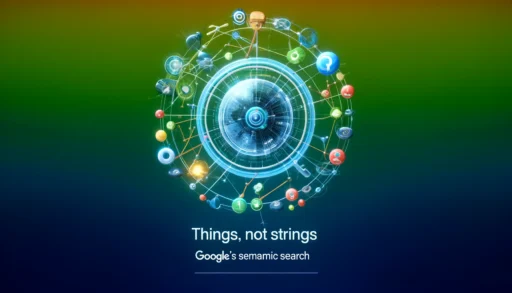
The Google slogan “Things, Not Strings” refers to the shift from simple text matching to a more contextual understanding of search queries. The Google Knowledge Graph exemplifies this concept.
Traditional Search Limitations
Basic search primarily relies on text-string matching, meaning it simply looks for the exact words of the search query within the document. This method needs help with lexical variants (e.g., plural forms, different verb tenses) and the inherent ambiguity of human language.
Semantic Search and the “Things, Not Strings” Approach
Semantic search strives to understand the meaning and context behind search queries, moving beyond mere word matching. It aims to identify the “things” being searched for—the underlying concepts and entities, not just the “strings” of text. The Google Knowledge Graph stores vast information about real-world entities (people, places, things) and their relationships.
How “Things, Not Strings” Works
Query Parsing: Instead of searching for the entire query verbatim, the search engine breaks it down, identifies significant terms (like locations or dates), and disregards irrelevant words.
Knowledge Graph Integration: Google leverages its Knowledge Graph to provide additional information about the entities identified in the query, offering a richer understanding of the “things” being searched.
Semantic Metadata: Structured data like taxonomies and tags provide additional context to web pages, helping the search engine understand the relationships between terms and addressing issues of synonymy and ambiguity.
Why Traditional Search Fails

Traditional, text-string-matching search methods often fail to deliver satisfactory results due to several key reasons:
Limited Understanding of Language
Lack of Lexical Variant Recognition: Basic search needs to work on variations in word forms (e.g., singular/plural, different verb tenses). A search for “horse” might not retrieve documents containing “horses.”
Inability to Handle Acronyms and Abbreviations: Searches for full terms might not yield results that primarily use acronyms (e.g., searching for “unmanned aerial vehicles” might not retrieve documents heavily focused on “UAVs”).
Ignoring Synonymy: Basic search doesn’t recognize that different words can represent the same concept (e.g., a search for “automobile” might not retrieve documents using the synonym “car”).
Ambiguity of Language
Word Sense Disambiguation: The same word can have multiple meanings depending on the context. Traditional search struggles to differentiate these (e.g., a search for “bank” could refer to a financial institution or a riverbank).
Lack of Contextual Awareness: Basic search doesn’t consider the user’s intent or the broader context of the search, simply looking for matching words regardless of their meaning within the document.
Limitations of Keyword-Based Systems
Keyword Stuffing: Websites often manipulate keyword density to game search rankings, leading to irrelevant or low-quality results.
Inability to Capture Complex Concepts: Keywords often do not express the nuances of complex topics or research questions.
The Ever-Growing Volume and Complexity of Data
Information Overload: The sheer volume of online information makes it challenging to sift through and find relevant results.
Shifting Language and Terminology: Specialized fields constantly evolve, introducing new terms and concepts that traditional search methods might not recognize.
Basic Search: A Limited Approach

Basic search, also referred to as traditional or text-string-matching search, operates on a simple principle: it searches for exact matches of the words entered into the search bar. This approach has several limitations:
Lexical Variants
Basic search does not consider variations of a word, such as singular/plural forms (e.g., “horse” vs. “horses”) or different verb tenses. To retrieve it, users must know the precise form of a word used in a document.
Natural Language
Basic search does not attempt to interpret the meaning of a search query as a whole. It treats each word individually without considering the grammar or syntax of the search phrase, preventing it from understanding the user’s intent.
Conceptual Matches
Basic search needs to recognize the relationships between concepts or synonyms. It cannot be understood that different words can represent the same idea. For example, a search for “automobile” would not retrieve documents that use the synonym “car.”
This fundamental limitation of basic search – its inability to move beyond the literal matching of text strings – is the primary reason semantic search methods are being developed and implemented. Semantic search aims to overcome these limitations by understanding the meaning behind the words and the relationships between concepts.
The Trouble with Language: Ambiguity and Specialized Vocabularies

Language ambiguity and specialized vocabularies present significant challenges for basic search methods.
Language Ambiguity
One of the main reasons basic search fails is the inherent ambiguity of language. The same word can have multiple meanings depending on the context. Basic search cannot discern these different meanings, leading to irrelevant results. For example, the word “horse” can refer to an animal, a tool used in carpentry, or a piece of equipment in gymnastics. A basic search engine must understand the context to differentiate between these meanings, leading to irrelevant results.
Specialized Vocabularies
Scholarly publishing often involves large volumes of content within specific fields of study. These fields typically employ specialized vocabularies, including technical terms, jargon, and acronyms. This presents a significant challenge for basic search, as it cannot equate acronyms or abbreviations with their corresponding concepts. For example, a search for “unmanned aerial vehicles” yields fewer results than a search for “UAV,” indicating that the acronym is more frequently used within that specific field. A user unfamiliar with the acronym would miss relevant information, as the search engine needs to recognize that both terms represent the same concept.
The inability of basic search to handle these linguistic complexities emphasizes the need for semantic search methods. Semantic search aims to understand the meaning behind the words and the relationships between concepts, ultimately improving the accuracy and relevance of search results.
Semantic Search in Scholarly Publishing

Semantic search is crucial in scholarly publishing due to several challenges with traditional search methods:
Challenges of Traditional Search in Scholarly Publishing
Lexical Variants and Acronyms: Scholarly content is rife with technical terms, jargon, and abbreviations. A basic search must recognize that different terms, like an acronym and its complete form, represent the same concept, leading to incomplete results.
Ambiguity of Language: The same word can have different meanings in different contexts. Basic search needs more sophistication to understand these nuances, often returning irrelevant results.
Evolving Specialized Vocabularies: The language used in specialized fields changes over time. New terms emerge, and existing terms acquire new meanings. The basic search must catch up with these changes, hindering effective information retrieval.
Semantic Search Solutions for Scholarly Publishing
Lexical Variants and Fuzzy Matching: These techniques use natural language processing to handle misspellings, plurals, and other variations in word form, broadening the search scope.
Query Parsing: This involves analyzing natural language search queries to identify the user’s intent rather than simply matching text strings. It can distinguish between informational and transactional queries, for example.
Leveraging Semantic Metadata (Taxonomies and Tagging): This approach relies on controlled vocabularies and subject tagging to categorize documents based on their conceptual content. By linking keywords to broader concepts, it helps
overcome the limitations of simple text matching.
Knowledge Graphs: These are large databases of information about entities and their relationships. Knowledge graphs can connect authors, institutions, research topics, and other relevant entities in scholarly publishing. This interconnected web of information provides context and facilitates accurate retrieval.
Novel Approaches: Examples like the JSTOR Text Analyzer demonstrate innovative ways to enhance scholarly search. This tool analyzes a user-provided document to identify its key topics and then retrieves relevant documents from the JSTOR corpus based on those topics.
Benefits of Semantic Search
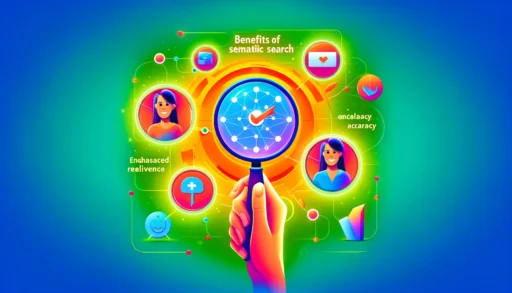
Semantic SEO emphasizes improving a website’s visibility by structuring content so search engines can easily understand and relate to real-world entities and their relationships. Techniques like Schema Markup are crucial for this purpose.
Enhanced Relevance and Accuracy
Semantic search delivers more relevant and accurate results by understanding the meaning behind search queries and the relationships between concepts.
Improved User Experience
Users can find the information they need more efficiently without being familiar with a field’s specific terminology.
Increased Visibility
Publishers can optimize their content for semantic search to improve its visibility on the web.
Examples of Semantic Search in Action
Google Scholar: While not explicitly stated in the sources, Google Scholar likely employs some semantic search to handle the vast amount of scholarly content. Its ability to prioritize relevant results and filter by publication date, author, and other criteria suggests the use of semantic understanding.
PLOS: PLOS utilizes a taxonomy-driven subject metadata system, allowing users to browse their repository by subject categories and see how many articles are tagged with each term. This demonstrates the use of semantic metadata to enhance search and discovery.
JSTOR Text Analyzer: This tool exemplifies a novel approach to semantic search in scholarly publishing. It allows users to search based on a document’s conceptual content.
Challenges of Basic Search with Large, Specialized Corpora
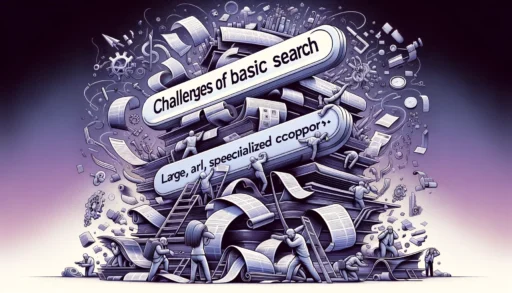
Basic search faces significant challenges when dealing with large, specialized corpora due to its reliance on simple text-string matching.
Specific Challenges Posed by Large, Specialized Corpora for Basic Search
Limited Understanding of Lexical Variants: Basic search struggles to recognize lexical variants, such as different word forms (e.g., psychology, psychological). This means a search for “psychological” might miss documents containing “psychologically” or “psychology,” leading to incomplete results.
Inability to Handle Acronyms and Abbreviations: Specialized fields often employ acronyms and abbreviations, which basic search fails to equate with their complete forms. For example, a search for “UAV” might not retrieve documents containing “unmanned aerial vehicles” and vice versa, limiting the comprehensiveness of the search.
Ambiguity of Language: The inherent ambiguity of language poses a significant problem for basic search. A word like “horse” can have multiple meanings depending on the context (e.g., animal, carpentry tool). Basic search cannot discern these contextual nuances, leading to irrelevant results.
Evolving Vocabularies: Specialized fields continuously evolve, introducing new terminologies and concepts. Basic search relies on predefined keywords and must catch up with these changes, hindering its ability to retrieve the most up-to-date information.
Basic search’s limitations stem from its reliance on simple text matching, which makes it inadequate for navigating the complexities of large, specialized corpora.
Semantic Search: Overcoming the Limitations of Basic Search
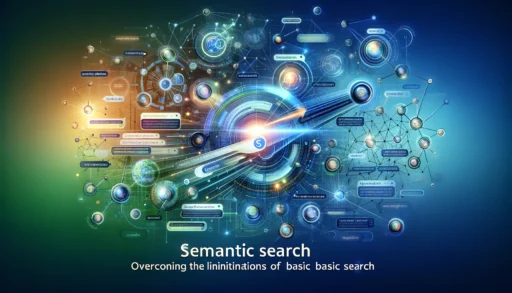
Semantic search offers a powerful solution to the challenges of basic search in navigating large, specialized corpora. Unlike basic search, which relies on simple text matching, semantic search seeks to understand the meaning and context of search queries, enabling it to overcome the limitations outlined in the provided sources.
How Semantic Search Addresses the Challenges
Understanding Lexical Variants: Semantic search utilizes natural language processing (NLP) techniques, including lexical variant analysis. This allows it to recognize different forms of a word, such as “psychology,” “psychological,” and “psychologically,” ensuring that documents containing any of these variants are retrieved.
Handling Acronyms and Abbreviations: Semantic search incorporates taxonomies and knowledge graphs that map acronyms and abbreviations to their corresponding complete forms. For example, a search for “UAV” would automatically include “unmanned aerial vehicles” in the search, expanding the scope and relevance of the results.
Resolving Ambiguity: Semantic search tackles ambiguity by leveraging contextual information. It considers factors like user location, search history, and related concepts to refine the search and deliver more precise results. For instance, a search for “horse” from a user with a history of carpentry-related searches would prioritize results related to woodworking tools.
Adapting to Evolving Vocabularies: Semantic search, particularly through knowledge graphs, is designed to be dynamic and adaptable. It can incorporate new terminologies and concepts as they emerge, ensuring the search remains relevant and up-to-date with the evolving nature of specialized fields.
Techniques Used in Semantic Search
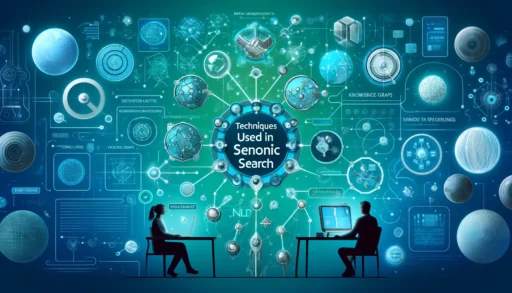
Semantic search employs diverse techniques to understand the meaning and context behind search queries. These techniques go beyond simple text matching and enable search engines to deliver more relevant and comprehensive results.
Key Techniques Utilized in Semantic Search
Lexical Variant Analysis and Fuzzy Matching: Semantic search utilizes natural language processing (NLP) to analyze and identify lexical variants of words, such as different tenses or forms (e.g., psychology, psychologically). Fuzzy matching, using methods like Levenshtein distance, helps catch misspellings or slight variations in word spelling (e.g., “Bob” and “Rob”).
Query Parsing: Semantic search engines utilize query parsing to analyze natural language search queries. By identifying critical elements like question words (e.g., “when,” “where”) and eliminating irrelevant words, the parser extracts the core meaning and intent of the search.
Contextual Search: Contextual search methodologies use information about the user’s location, recent search history, and other relevant data to provide more personalized and relevant results. For instance, a search for “Harrison Ford” would prioritize information relevant to the user’s location, such as local movie showings if the user is in a specific city.
Knowledge Graphs: Knowledge graphs are large, structured databases containing information about entities (people, places, things) and their relationships. Semantic search leverages knowledge graphs to understand the context of a query, enabling it to retrieve relevant facts, connect related concepts, and provide more informative results. For example, a search for “Empire State Building” would utilize a knowledge graph to provide web pages that match the term and relevant facts like its address, height, and history.
Taxonomy-Driven Metadata Tagging: Semantic search relies heavily on semantic metadata, which involves tagging documents with subject terms from controlled vocabularies or taxonomies. This helps categorize content based on its meaning and facilitates the retrieval of conceptually related information. This technique enhances search by incorporating synonyms, handling acronyms, and addressing ambiguity in language.
Real-Time Document Indexing: Novel approaches like the JSTOR Text Analyzer utilize real-time document indexing to generate relevant metadata “on the fly” as a document is accessed. This dynamic indexing helps uncover connections and relationships between concepts, providing a more dynamic and responsive search experience.
These techniques work together in semantic search to interpret user queries, analyze content, and retrieve the most relevant and informative results, going beyond the limitations of essential text matching.
Natural Language Processing (NLP)
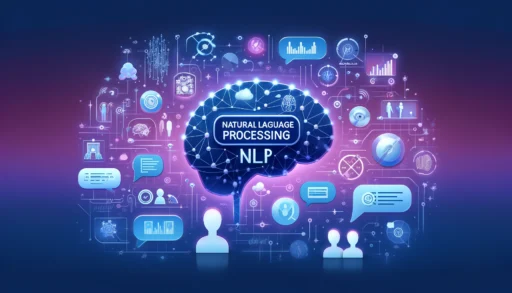
Natural Language Processing (NLP) focuses on enabling computers to understand, interpret, and generate human language. In the search context, NLP is crucial in bridging the gap between user queries and the vast amount of online information.
Significance and Applications of NLP
Google’s Evolution from a Traditional Search Engine to a Semantic Engine: NLP, AI, and machine learning advancements allow Google to comprehend human language and anticipate user needs, transforming it into a discovery engine.
Google’s AI-First approach: AI, powered by NLP, is becoming increasingly integral to Google’s search algorithms, making it harder for traditional SEO techniques to manipulate search rankings.
Increasing Importance of NLP in SEO: Semantic search, heavily reliant on NLP, is changing the dynamics of SEO, moving away from simple keyword matching to a more complex understanding of user intent and context.
NLP’s role in Google’s AI-first approach underscores its growing importance in search engine optimization. Understanding the nuances of human language and anticipating user needs is becoming fundamental to how search engines operate and how users interact with online information.
Understanding Meaning and Intent in Search

Semantic SEO seeks to enable search engines to understand the meaning and intent behind queries, moving beyond simple keyword matching. Several techniques contribute to this goal:
Techniques to Understand Meaning and Intent
Natural Language Processing (NLP): NLP is critical to understanding user intent. NLP allows search engines like Google to decipher the nuances of human language, going beyond the literal words used in a search.
Entities: Entities are specific concepts or things that are connected, unambiguous, and contextual. Search engines can better understand the user’s intended meaning by identifying entities within search queries. For example, recognizing “Harrison Ford” as a “Person” entity allows Google to provide relevant information from its Knowledge Graph, such as biographical details and film appearances.
Google’s Knowledge Graph: The Knowledge Graph is a vast database of entities and their relationships. This allows Google to connect words to concepts and understand the underlying intent behind a search query. For instance, a search for “moon distance” can be understood as a question about the distance between the Earth and the moon, even though those exact words aren’t in the query.
Structured Data and Schema Markup: Structured data and schema markup provide explicit clues to search engines about a webpage’s content. Using schema.org vocabulary, website owners can define the meaning of their content, making it easier for search engines to understand and categorize it. This can improve search visibility and relevance, especially for long-tail queries that are more specific and intent-driven.
These techniques collectively contribute to a richer and more nuanced understanding of user intent in search. By employing semantic SEO principles, website owners can align their content with how search
engines are evolving, ensuring that their content is discoverable by users seeking information that aligns with their specific needs and intent.
Understanding Ambiguity in Language

Semantic search techniques are designed to address the inherent ambiguity of language. Several techniques help search engines interpret queries more accurately:
Traditional Text-String-Matching Search Limitations
A basic search merely looks for the word(s) in the query, often insufficient to deliver relevant results. Language can be ambiguous, and words can have multiple meanings depending on the context.
Semantic Search Beyond Keywords
Semantic search aims to find keywords and determine the intent and contextual meaning of the words a person uses for search. This means that semantic search attempts to go beyond the literal words in a query and understand the user’s underlying goal.
Complexity of Interpreting Search Queries
Interpreting search queries is complex, and multiple interpretations are considered depending on user intent, location, and search history. This highlights the challenges in providing accurate and relevant search results.
Search engines can provide more relevant and helpful results by understanding the meaning and intent behind a query rather than just matching keywords.
Knowledge Graphs: A Foundation for Semantic Search

Definition and Purpose
Knowledge graphs represent knowledge in the context of the Semantic Web. They are built from “triples” (subject-predicate-object expressions) that connect entities. These graphs use open-linked data, allowing machines to interpret and understand the relationships between different pieces of information.
Google’s Knowledge Graph
This includes information about people, places, and things as real-world entities, with edges between entities indicating their connections. The interconnectedness transforms a collection of data into a graph.
Functionality and Benefits
Knowledge Graphs provide additional information beyond traditional web page results, including links to relevant pages, photographs, physical addresses, contact information, official websites, reviews, social media links, hours of operation, and ticketing information.
Construction and Application
Knowledge Graphs are constructed using triples, creating a vast network of interconnected data, forming the foundation of the Semantic Web. They can improve website user experience by creating “faceted navigation” based on entity relationships and helping websites understand their content gaps for more targeted content strategies.
Knowledge Graphs are essential components of semantic search, enabling search engines to move beyond simple keyword matching and understand the relationships between different pieces of information.
Databases of Entities and Their Relationships: Unveiling a Deeper Understanding of Concepts

Entities represent distinct concepts, individuals, places, or things in the digital realm. These entities are more than just keywords; they possess unique identifiers and attributes that distinguish them from one another. Relationships link entities, establishing connections and dependencies using triples (subject-predicate-object).
Databases as the Foundation
Databases store the triples that define the relationships between entities, providing the context necessary to disambiguate entities and understand their relationships within a specific domain. They facilitate efficient retrieval of specific information about entities and their relationships, allowing for targeted analysis and knowledge extraction.
Knowledge Graphs as a Representation
Knowledge Graphs emerge from these databases by organizing entities and their relationships into a structured, interconnected network. These graphs are machine-readable, enabling search engines and other applications to comprehend the intricate connections between different pieces of information.
Google Knowledge Graph: Connecting Entities with Real-World Information
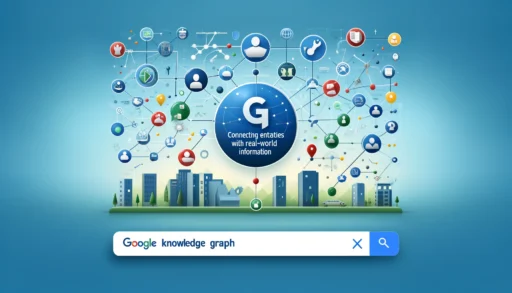
The Google Knowledge Graph delivers results about a search topic, providing a rich set of information on the right-hand side of the results page, including:
- Links to relevant Wikipedia pages and official websites
- Photographs and other visual content
- Physical addresses, contact information, and directions
- Reviews and ratings
- Social media links
- Hours of operation and popular visiting times
- Ticketing information
- Links to other common searches by users (“People also searched for…”)
Built upon standard schema.org structures, the Google Knowledge Graph helps search engines understand the relationships between entities and provide more comprehensive search results.
Semantic Metadata: Taxonomies and Tagging

Semantic metadata, such as taxonomies and tagging, provides context and meaning to content, enabling search engines to understand the concepts represented by text strings. Taxonomies are hierarchical systems of classifying information and organizing content into categories and subcategories. Tagging involves assigning descriptive keywords or terms to content, making it easier to find and categorize.
Controlled Vocabularies
These standardized sets of terms ensure consistency and accuracy in tagging. Semantic tagging overcomes ambiguities inherent in natural language by linking tags to established concepts within a domain.
Practical Application
Publishers employ controlled vocabularies to improve search functionality. This approach allows users to browse a taxonomy and discover related content, enhancing content discoverability and providing users with a richer and more intuitive search experience.
Controlled Vocabularies and Subject Tags as a Semantic Layer

Controlled vocabularies and subject tags provide a semantic layer that enhances information retrieval by connecting content to meaningful concepts. They create a more intelligent system that recognizes concepts and their relationships, leading to more accurate and relevant search results.
Synonym Recognition, Acronym Disambiguation, and Efficient Browsing in Semantic Search
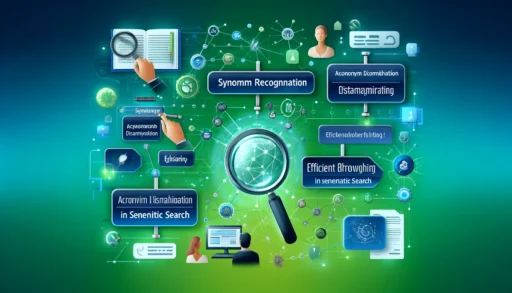
Semantic search employs several techniques to move beyond simple text-matching and understand the context of a search:
Synonym Recognition
Controlled vocabularies enable search engines to recognize synonyms and deliver results even if the user’s search terms differ from the exact wording in the content.
Acronym Disambiguation
Controlled vocabularies link acronyms and their complete forms, expanding the scope and relevance of search results.
Efficient Browsing
Controlled vocabularies allow users to browse by subject categories, facilitating efficient exploration of a content corpus.
Semantic search provides a richer, more accurate, and efficient information retrieval experience by incorporating these methodologies.
Semantic SEO: Practical Applications

Semantic SEO is a search engine optimization approach that leverages semantic search principles to enhance a website’s visibility and organic traffic. By providing meaningful data that can unambiguously answer a specific search intent, Semantic SEO helps search engines understand the context of the content and serve it to users seeking relevant information.
Structured Data Markup
Website owners can classify content on a page using schema.org vocabulary, making it easier for search engines to understand.
Knowledge Graph Integration
Creating a knowledge graph for a website allows for organizing and connecting entities relevant to the content.
Content Optimization
Incorporating natural language phrases, synonyms, and semantically related terms makes content more accessible to search engines and improves its ranking for relevant queries.
SERP Feature Optimization
Semantic SEO is vital in optimizing for SERP features, such as featured snippets, knowledge panels, and “People also ask” boxes.
Voice Search Optimization
Semantic SEO helps structure content to align with people’s speech, making it easier for voice assistants to understand and retrieve relevant information.
By embracing semantic SEO, businesses can improve their online presence, attract the right audience, and drive success in the ever-changing digital world.

